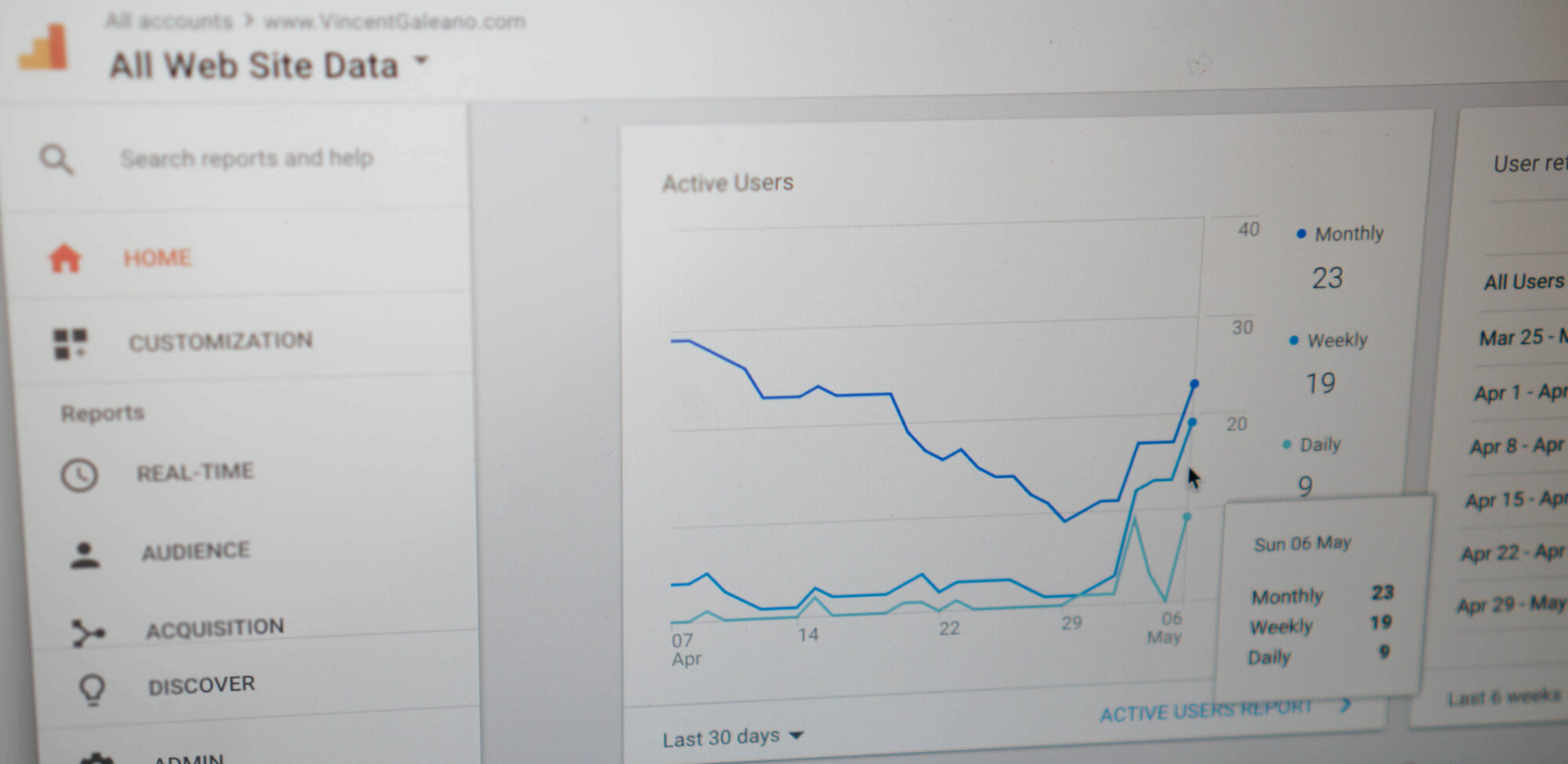How to track SEO
In this post, Castle’s Head of SEO Rachel Walton discusses how to track SEO. Looking at the various metrics you’ll want to keep an eye on and what they do – and don’t! – mean for your business.
SEO stands for search engine optimisation and it refers to a range of strategies for improving your website’s ranking in search engine results for key terms related to your business.
With Google now processing over 3.5 billion searches every single day, this is obviously a great opportunity to increase the reach of your business and engage new customers.
But how do you actually measure how well your SEO strategies are working? In this post, I’ll explain some of the key things to look for when evaluating the progress of an SEO campaign, and how to work out which are the most important metrics for the website you’re optimising and the stage of the campaign that you’re at.
Why is SEO important for websites?
SEO provides an important opportunity for all different types of websites to be seen by a wide range of people who ordinarily wouldn’t have found those pages.
For example, let’s take a cake shop. As the owner of a cake shop, you’re likely used to people finding you through word of mouth, perhaps you’ve used paid advertisements, perhaps you’ve put flyers in shops – there is a whole range of marketing strategies you may have taken advantage of to find customers.
But if you optimise your website with best-practice search engine optimisation, then you’ll find that it’s a lot more likely you’ll appear in search results for things that are relevant to your business.
So, if somebody is searching for “celebration cakes near me”, “birthday cakes”, “christening cakes”, “cupcake platter”, or whatever the keywords might be that you’re targeting through SEO, you will then start to appear as a result for that search. And the more successful your SEO, the higher you’ll appear!
This obviously means that you’ll have a much higher chance of increasing the number of customers that you get through to your page and the different leads and enquiries you’ll receive.
And this approach is applicable to all different types of sites. Whether you’re an eCommerce or lead generation site, or even an informational site, it’s just about widening your reach to more people and hopefully making more conversions.

How to track SEO?
When it comes to figuring out how to track SEO, the important thing to remember is that SEO is a longer process than some people might think.
While there are some quick wins you can focus on, and sometimes you can do some optimisation that returns conversions quite quickly, in most cases it’s more of a long-term game that can take many months to do properly and to implement well.
With this in mind, there are different sets of metrics that you can use to track your KPIs for SEO. (For more on KPIs, keep reading below!) These can be divided into leading metrics and lagging metrics.
Leading metrics
Leading metrics are usually the first metrics that we would pay attention to in SEO. These are things like impressions, which refers to the number of people who lay eyes on your page. It doesn’t necessarily indicate who will click through to that URL, but every time somebody sees your page as a search result, that would count as an impression.
The ranking is another important leading metric, and this is simply the position that your site appears on Google for a given search term. Obviously, if you’re position number one, that’s amazing, but you can see the progression of a client through changes to rankings over time. Perhaps you have a client who you get on board at position sixty, who you eventually push up to position thirty and then position ten. And once you’re on the first page of results, you can start a big push up to the top.
So, impressions and rankings are usually great ways to measure your progress at the start of a campaign, because you can see the impact that your immediate changes are having on improving things – even if this doesn’t equal increasing conversions yet. When you’re on the second page of Google, you’re perhaps not going to get conversions, but it doesn’t mean you’re not making progress. It just means that you’re not quite there yet.
Two months in, maybe you’ll have moved up from position eighty to position sixty, and while that won’t actually increase conversions yet, you’ll find that it’s still a good way to measure progress, because it means you’re that bit closer. And perhaps in another two months’ time, you’ll be on the second page, and you’ll be just about to break through to the point where you’ll be making more conversions.
So, leading metrics are helpful ways to measure things, especially in the early phases of an SEO campaign. They are the metrics that indicate the initial impact your SEO strategies are having.
Lagging metrics
The metrics that tend to be more important for clients are called lagging metrics. That’s because changes to these metrics tend to come after those to the leading metrics, lagging behind them.
Lagging metrics are things like traffic and conversions. Sometimes people will classify traffic as a leading metric, but in fact, it isn’t. That’s because, even when you increase the rankings of a page, it doesn’t necessarily mean that the traffic’s going to follow yet, and it’s the same for conversions. It’s only really when you break through to those front pages with high search volumes that you’re really going to start to feel the benefits of SEO.
Understandably, a lot of clients tend to focus on the lagging metrics, but it’s really important to incorporate both lagging and leading metrics into reporting. This is so that clients can understand that you are making progress and you will ultimately achieve the goals you’ve set. But for now, it’s just about putting the work in and seeing the benefits come later down the line.
What are the differences between tracking e-commerce and lead generation websites?
The metrics you’ll want to focus on to track SEO will depend on the type of website you’re optimising. For instance, there are differences between tracking eCommerce and lead generation websites.
The most significant difference is in the lagging metrics you would focus on in each case. For an eCommerce site, one of the key lagging metrics would be the revenue generated, whereas the lagging metrics for a lead generation site would be goals and conversions. So, when people fill out newsletter signups or when people fill out contact forms about enquiries, these can be the end goal for lead generation clients, whereas they are less significant for eCommerce.
Further, there are additional metrics that are involved in eCommerce that you won’t necessarily find as much in lead generation. One example is average order value, which is basically a good indication of how your website is managing to squeeze out extra money from customers.
A particular customer might have intended to buy a kettle, but if you have a great website with incredible UX design, maybe you’ll encourage them to buy a toaster as well. Increasing average order value can be a great way to generate more money, and therefore average order value can be a KPI for eCommerce sites on its own.

What are KPIs?
Deciding on which metrics are most important for you to track from among the various lagging and leading metrics is inseparable from determining your KPIs. KPIs are key performance indicators and they can be literally anything at all. A KPI is, at the most basic level, just a way that you measure your success.
For a marketing agency, KPIs can be things like traffic, revenue or return on ad spend – there’s a huge range of KPIs you can have for different things. With SEO, often the end goal is still revenue and leads converted. But to understand how people are progressing sooner than that, it’s also important to pay attention to KPIs like impressions and rankings.
Let’s look more closely at some specific KPIs that are particularly important to SEO.

What KPIs should you be tracking?
For SEO, I would certainly say it’s vital to track impressions. However, within this, you’ll want to separate brand and non-brand impressions. The former refers to the number of people who see your page on their search results through searching the specific brand name, and the latter are those who see it by searching a related term.
Tracking brand and non-brand impressions separately is important because you’ll find that, especially for a brand that’s quite well-known, you might have major fluctuations in the number of people searching for the brand, but these won’t really depend on your SEO. Rather, they’ll depend on things like how much the brand is posting on social media or how many affiliates they have working with them at a given time, or perhaps how much an endorsed celebrity has been posting about them lately.
All of these are things that can’t really be affected by SEO. So, for example, if 10k people a month ordinarily search for just the brand name by itself, and then only 6k people search for it the next month, that’s not necessarily something that you can impact with SEO. That’s just about the input that’s going into the site.
Whereas with non-brand searches, on the other hand, this is something that SEO can profoundly affect. Say, for example, you own a mechanics company and some of the keywords that you rank for are “electric drill” and “power tools”, then the impressions from those non-branded searches give you a much better indication of how the SEO is performing. Given this, knowing the difference between your branded impressions and your non-branded impressions is really important.

Aside from impressions, rankings are obviously a big factor. Knowing where you sit in the SERPs (search engine results pages) is very important. This is especially so for converting keywords – that is, the keywords that drive the most conversions. Therefore, being aware of what those converting keywords are is also important.
Finally, you just want to make sure that if you do see any fluctuations or drops in your rankings, you can go back and improve those pages and take back your position, or at least have an understanding of what’s happened. This means keeping an eye on search results and landing pages, and then ensuring that you’re doing everything you can to have pages that are better than your competitors’ and that is more likely to convert for you.
So, non-brand impressions and rankings for your converting keywords would be the main KPIs that I would focus on at the start of a campaign. But of course, you should always have the end goal of generating revenue in mind. Even though it is great to have an understanding of your progress, especially in those initial months, the most important thing for clients, obviously, is to generate more revenue and to generate more leads.
It’s vital that you always have that in your mind, and not get too caught up in rankings. For instance, you might want to rank for a word that’s got a very high search volume. But if the search intent isn’t something that’s going to convert, ultimately you need to think about whether it’s worth your time and effort to go after those keywords.
It might actually be better to invest your time into something that will ultimately generate more revenue. So, while all the other metrics are important and they’re a great way to report progress to the client, the best way to get the results is to always have generating revenue in mind.
